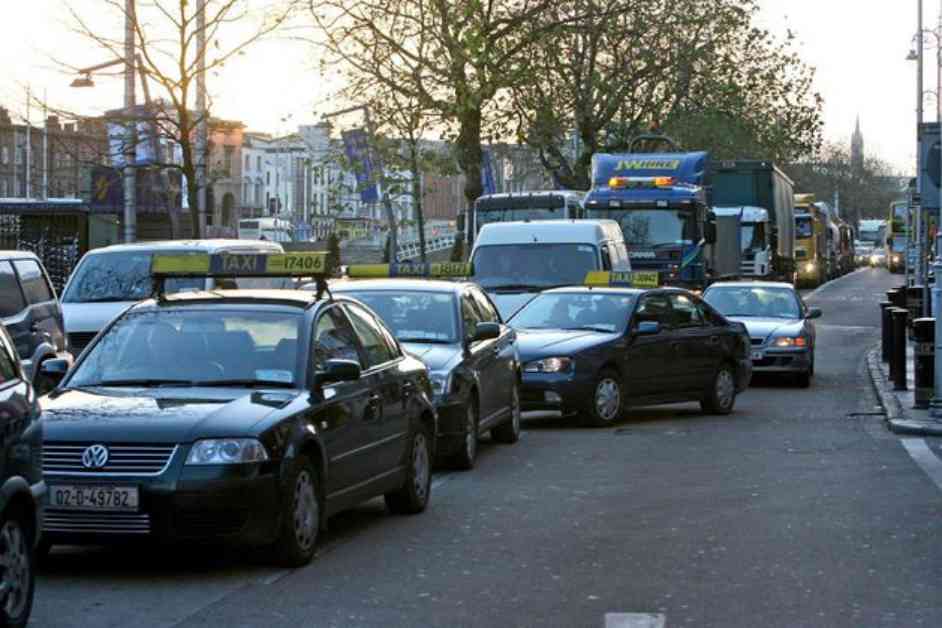Dublin is set to undergo major changes in its transportation system as the city prepares to implement the Dublin City Centre Transport Plan (DCCTP). These changes, overseen by Dublin City Council (DCC), are aimed at reducing vehicle congestion, prioritizing public transport, walking, and cycling, and enhancing the overall quality of life in the capital.
Key Changes in Traffic Management
Starting tomorrow, August 25, new traffic management measures will be introduced in Dublin city center, specifically on the north and south quays. The changes will impact areas such as Bachelors Walk, Burgh Quay, and Aston Quay. These modifications include updated road markings, signage, and restrictions on certain types of vehicles during specific hours.
On Bachelors Walk, general traffic will be allowed to travel as far as O’Connell Street but must turn left and cannot continue on to Eden Quay. Only buses, taxis, and cyclists will have the permission to go straight ahead. Similarly, on the south quays, general traffic can travel along Burgh Quay up to O’Connell Bridge but cannot continue straight on to Aston Quay. The straight-ahead movement from Burgh Quay to Aston Quay will be reserved for public transport, taxis, and cyclists only.
These changes aim to discourage through traffic in the city center, as studies have shown that a significant portion of drivers passing through Dublin do not have the city center as their destination. By prioritizing public transport and non-motorized modes of transportation, the plan seeks to create a more sustainable, efficient, and environmentally friendly urban environment.
Support and Opposition to the Plan
The Dublin City Centre Transport Plan has garnered both support and opposition from various stakeholders. Transport Minister Eamon Ryan and parties represented on DCC have expressed strong support for the implementation of the plan. Groups such as the Dublin Commuter Coalition and the Dublin Cycling Campaign have also advocated for the changes.
However, the Dublin City Centre Traders Alliance, which includes businesses like Brown Thomas Arnotts and car park owners, has led the opposition against the plan. Other organizations, such as DublinTown and Retail Excellence Ireland, have raised concerns about the potential economic impact of reducing car traffic in the city center.
Despite the differing opinions, Dublin Chamber, which represents over 1,000 member companies, has backed the council’s plan, albeit with some reservations during the initial stages. The debate surrounding the transportation plan highlights the complex interplay between urban planning, economic interests, and environmental sustainability.
Future Changes and Expansion
In addition to the immediate changes coming into effect, the Dublin City Centre Transport Plan outlines future developments aimed at further enhancing the city’s transportation system. Pedestrianized expansions into areas like Capel Street, Dawson Street, and South William Street are in the planning stages, reflecting a broader trend towards creating more pedestrian-friendly urban spaces.
Proposals for transforming areas such as College Green, Dame Street, Westland Row, and Pearse Street are also in the pipeline. These plans include restrictions on certain types of traffic, the introduction of new cycling infrastructure, and the creation of pedestrian plazas to improve the overall functionality and safety of the city center.
Moreover, initiatives to create car-free corridors, expand public spaces, and enhance pedestrian and cycling environments are being considered for key areas like Beresford Place, Gardiner Street, Parliament Street, and Custom House Quay. These developments aim to strike a balance between promoting sustainable modes of transportation, supporting local businesses, and enhancing the overall urban experience for residents and visitors alike.
In conclusion, the Dublin City Centre Transport Plan represents a significant step towards creating a more sustainable, efficient, and livable city for all residents and visitors. While the changes may face some resistance from certain quarters, the long-term benefits of prioritizing public transport, walking, and cycling are clear. By working together to address the challenges of urban congestion and environmental sustainability, Dublin can pave the way for a more vibrant and inclusive city center.












